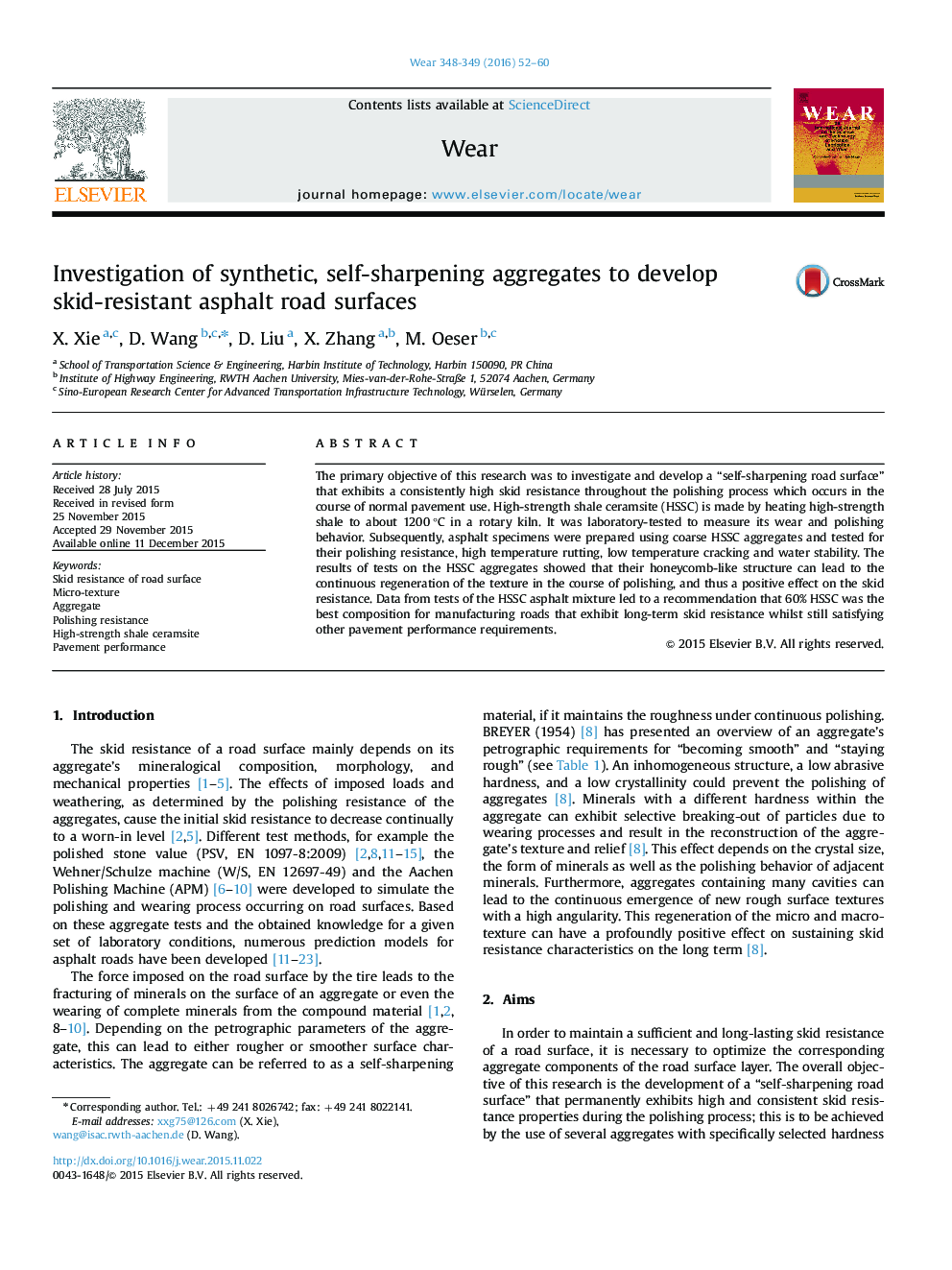| Article ID | Journal | Published Year | Pages | File Type |
|---|---|---|---|---|
| 616961 | Wear | 2016 | 9 Pages |
•High-strength shale ceramsite (HSSC) is tested with regard to wearing and polishing behavior in the laboratory.•The honeycomb structure of HSSC leads to a regeneration of micro-texture in polishing process.•A limited wearing resistance and a high polishing resistance represent a crucial component for the self-sharpening surface.•The different aggregate hardness is beneficial to maintaining a sufficient, long-term skid resistance.•60% HSSC content is the best dosage for the manufacturing of asphalt wearing courses.
The primary objective of this research was to investigate and develop a “self-sharpening road surface” that exhibits a consistently high skid resistance throughout the polishing process which occurs in the course of normal pavement use. High-strength shale ceramsite (HSSC) is made by heating high-strength shale to about 1200 °C in a rotary kiln. It was laboratory-tested to measure its wear and polishing behavior. Subsequently, asphalt specimens were prepared using coarse HSSC aggregates and tested for their polishing resistance, high temperature rutting, low temperature cracking and water stability. The results of tests on the HSSC aggregates showed that their honeycomb-like structure can lead to the continuous regeneration of the texture in the course of polishing, and thus a positive effect on the skid resistance. Data from tests of the HSSC asphalt mixture led to a recommendation that 60% HSSC was the best composition for manufacturing roads that exhibit long-term skid resistance whilst still satisfying other pavement performance requirements.
